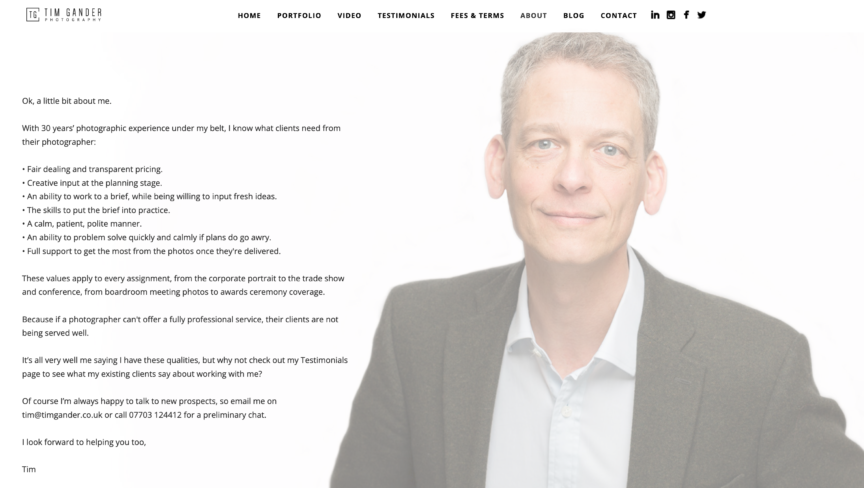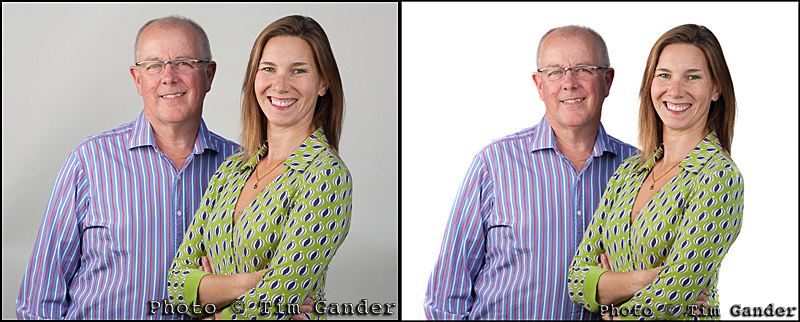We all know how important it is to have a professionally-taken business portrait, so how come mine is so old?!
Yes, it’s time for the cobbler to mend his shoes and for the physician to heal himself. The photographer needs to take his own portrait. I’ve been putting it off because like most of you, I don’t like having my photo taken.
But that’s no excuse. Time has pretty much the same effect on everyone – it ages us, and I have no immunity against the ravages of time.
For a start, I have fewer grey hairs now; that is to say, I have fewer hairs. Apart from that, it’s just good practice to update your profile photo every three years (five at a stretch).
The issue is that while a simple selfie is easy enough to do, taking a selfie that looks like a professional portrait is a bit of a circus act. Modern cameras make it easier than it used to be, especially now that the camera can be operated via a phone app, but it’s still quite a feat of organisation and coordination. Maybe I should hire a photographer?
That would be fine by me, except I also take the opportunity of using myself as a model to really work on new ways of setting up, new approaches to getting the correct angle and perhaps more particularly, finding interesting tweaks to my current style. So making my new portrait will also be a chance to adjust and refine my portrait style.
In all likelihood the development will be more incremental than revolutionary, but it’s still a good exercise to go through.
And what could possibly go wrong? Artists and photographers have been making self portraits since the dawn of time. Vincent van Gogh famously did a few, and he turned out fine *googles the life of van Gogh and… “OH MY GOD! WHAT THE ACTUAL…?!!* Ok, maybe I’ll delay making my self portrait for a while longer…
Except there is always an excuse, from “I need to get my hair done” to “I’ve cut off my ear and presented it as a gift to my favourite prostitute”; I’ve heard them all and I can no longer wriggle out of it myself.
Now that I’ve said it, I need to go and do it. And I want you to nag me if I haven’t updated my profile photo in a week’s time. For the record, here’s my current one. Gosh, I looked so young!
And if you’re now realising it’s been six years (or more!) since your business profile portrait was updated for your website or LinkedIn profile, drop me a line and we’ll organise a nice relaxed photo session. No excuses, let’s do it.


